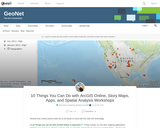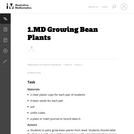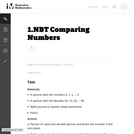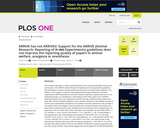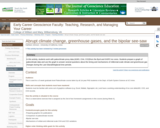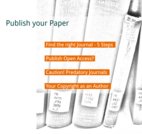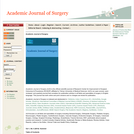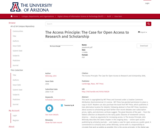For some such understudies, each exposition carries with it the test of improving it that tad than the last one. The issue is that when you write essays frequently, it's anything but difficult to stall out stuck of rehashing a similar recipe each time – especially when you as of now get great criticism from the educators who read them. So how would you take your essays to the following level and go from extraordinary to splendid? Here are some down to earth tips and systems that will enable you to write reliably great essays. Get Knowledge From Others Esssay Similarly as the books you read intuitively help shape your own written work style, so perusing other individuals' essays can enable you to create and expand alone article composing style. Endeavor to peruse a scope of different essays, including those of your associates and of scholastics. Read essays on a wide assortment of subjects, not really simply those that you're examining; diverse controls may apply various types of contentions or styles, so the more extensive you read, the more conceivable systems there are for you to get and use in essays of your own. Before reading more essay writing tips, if you need essay writing services only say us WriteMyEssayOnline, we will give you best services.As you read other individuals' essays, don't simply fully trust them. Be basic: what do you like about them? What don't you like about them? How enticing do you think they are? Is the contention an adjusted one, with focuses sufficiently upheld with prove? Has the writer utilized any systems you've not seen previously? Another great wellspring of essays is the broadsheet daily papers. Read the feeling pieces and analyze how the writer has upheld their focuses with confirm, and once more, be basic; note where they've forgotten things to attempt to induce you to a specific conclusion. Essays ought to be adjusted, so you can gain from the best of these writers and get a few systems to enable you to shape an adjusted piece. Your Vocabulary Must Be Good And Use It In Your Essay Properly A decent vocabulary will enable you to express precisely what you mean, as obviously and briefly as could be expected under the circumstances. Economy with words is a normal for all great essays, in light of the fact that perusers (and exposition markers) don't care for having their chance squandered with long, meandering focuses that could have been communicated down the middle the quantity of words. One method for guaranteeing that you can convey plainly and to the fact of the matter is through precise and successful utilization of cutting edge vocabulary. A decent article writer ought to never lay on their trees with regards to vocabulary; it's something you ought to take a shot at persistently, as there are in every case new words to discover that could help pass on a point all the more viably. Additionally, sending a decent vocabulary shows knowledge and enables you to be more enticing in your article composing. Here are some manners by which you can fabricate your vocabulary: Subscribe to a 'word multi day' email, (for example, this one from Merriam-Webster). Make an organizer in your email represent new word messages, with the goal that you can record each email and have them across the board put prepared to flick through and gain from in a sit without moving minute. Read generally, and allude to a lexicon for words you don't know as you come; thusly, you'll take in the new word and additionally observing it in setting so you know how to utilize it legitimately. Read diverse types of fiction, and verifiable covering a scope of subjects, and you'll have the special reward of augmenting your general learning and also your vocabulary. Use a thesaurus – on the off chance that you end up utilizing similar words again and again, change up your dialect by looking into those words in a thesaurus and finding different words that mean a similar thing. An expression of caution: words you find in a thesaurus can't simply be utilized reciprocally; even words with comparable implications can vary quietly in a way that makes them unseemly in specific settings, so discover cases of a word utilized accurately before you utilize another word out of the blue. Learn prefixes, additions and roots – it sounds exhausting, however this alternate route will enable you to take in a large number of more words. Numerous roots originate from Latin and Greek words, for example, "bene" in Latin, signifying "great", which offers ascend to words, for example, "advocate", "considerate" and "advantage". It's regularly conceivable to conclude the significance of another word in the event that you know its root and read it in setting. Prefixes are added to the start of a word to change the importance, for example, "semi" or "bet", while additions are added to the end, for example, "- capable" or "- ance". Start a vocabulary book – you most likely have one in case you're taking in an outside dialect, so why not have one for your local dialect also? Get yourself a decent scratch pad and utilize it to gather new words and their implications. The demonstration of recording the definition will enable you to recollect it, and you could incorporate a case of how the word is utilized to expand your odds of retaining it for use in essays. It might have distinctive segments for words on specific topics; you could have a general segment, and after that further parts of the scratch pad could be committed to expressions of utilization in history essays, science essays et cetera. Plan Your Essay Before Writing We've presumably all had it pounded into us that we ought to write a paper plan before we begin composing, however before you even do that, you have to realize what the contention you will make really is. At exactly that point would you be able to begin composing the structure for an article that develops to your general decision. To consolidate what you're endeavoring to state into a short, smart rundown for you to work from, take a stab at making an 'Elevator Pitch' style synopsis of what you expect to write and why perusers ought to be occupied with it. The Elevator Pitch is a system utilized by sales representatives when consolidating the contentions for purchasing an item into the most limited conceivable outline of why a client ought to think about a buy. The businessperson is advised to envision themselves in a lift; in the time it takes for that lift to achieve the coveted floor, they ought to have given a convincing contention for that item that would result in the client getting it, or if nothing else needing to know more. Your Elevator Pitch for your paper should pitch the possibility of it to a peruser, abandoning them needing to peruse the article being referred to. This is a significant extreme exercise, as it constrains you to be heartlessly compact in your reasoning and selection of words; however you can utilize this rundown to enable you to write your presentation, and it'll enable you to accomplish lucidity in what you're endeavoring to state. Give Solid Information To Reader What Other People Say We've said this on a past article on exposition composing, however it appears to be germane to specify it here as well. Essays are a shot for you to flaunt how broadly read you are, so ensure you quote other individuals' assessments, and unique sources, on what you're expounding on. For instance, if you somehow managed to write a history paper on early religious practices in Britain, you could cite unique messages on that point, (for example, Bede's Ecclesiastical History of the English People) and furthermore specify what a scope of current researchers need to say in regards to the theme. Differentiating perspectives ought to be looked for; it's far-fetched that everybody concedes to the subject, so indicate you've taken a gander at all the conceivable points. For every one of the subjects you're examining, begin a page in a journal for vital individuals in that field, with a synopsis of when they lived and what their perspectives are. That way, you'll have something to allude to when you're composing an article and need to counsel proper researchers or different writers whose assessments you may wish to incorporate. Try not to cite excessively; blend references with your own assessments so it doesn't look as if you need to take cover behind other individuals' words. It's fine to differ with a researcher you quote, if you can give proof and thinking for doing as such. This demonstrates you have contemplated it and influenced your own brain to up, as opposed to aimlessly tolerating what that researcher has said; this shows solid basic thinking aptitudes, one of the signs of splendid understudies. Your Punctuation Must Be Good You may not deliberately acknowledge it when you're perusing, but rather refined sentence structures have the universe of effect to how clever you sound. As we've just stated, the most vital thought when you're composing is making yourself simple for perusers to see; however you can in any case do this and use a scope of intriguing punctuation in the meantime. Utilize an assortment of sentence structures, long and short, yet don't give your sentences a chance to end up too long and meandering, or they wind up hard to peruse. Successful accentuation is fundamental in passing on your contentions influentially; the exact opposite thing an instructor or teacher needs to peruse is an article loaded with poor language structure. Also, the peruser shouldn't need to peruse a sentence more than once to comprehend it. You likely as of now have a manner of speaking you use for composing essays, however is it fascinating and locks in? Read through a portion of your old essays and ask yourself genuinely whether you discover them engrossing. In the event that they're not, it could well be on the grounds that you've not built up the correct manner of speaking. Essays constitute a formal, scholastic setting, yet that doesn't mean you need to exhaust. A sure manner of speaking will help demonstrate the peruser that you hear what you're saying and promise them that they're in safe hands.
